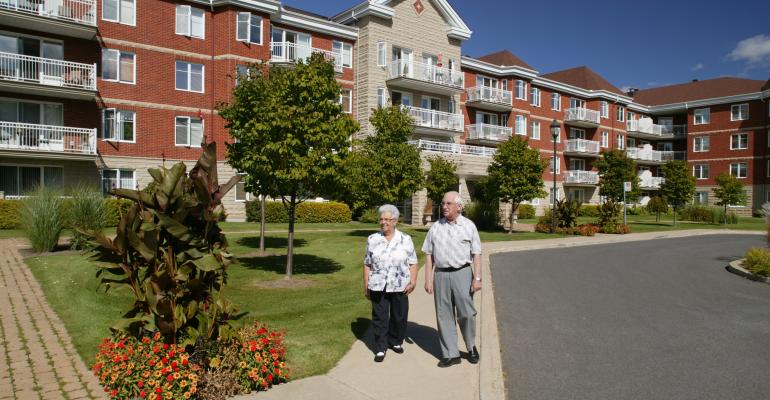Sponsored by National Investment Center
By Beth Burnham Mace
Delivering on its mission to enable access and choice for Americas elders, the National Investment Center for Seniors Housing & Care (NIC) provided a grant to NORC at the University of Chicago to conduct a demand study that quantifies and characterizes America’s middle-income seniors’ cohort. The results of The Forgotten Middle: Middle Market Seniors Housing Study were initially presented at a Health Affairs policy briefing in Washington, D.C. on April 24th and then at an Investor Summit in New York on May 21st.
Some notable takeaways from the study include:
- The middle market investment opportunity is large and growing with over 14.4 million seniors anticipated to be in this cohort by 2029—6 million more than today.
- More than half of these middle-income seniors (54 percent) will not have sufficient financial resources to cover projected average annual costs of about $60,000 for assisted living rent and other out-of-pocket medical costs a decade from now, even if they generated equity by selling their home and committed all of their annual financial resources.
- That said, 46 percent or 6.6 million seniors will be able to cover the costs, highlighting a significant demand pool that is not being tapped into today.
- An additional 2.3 million middle-income seniors could meet the yearly costs of rent and other costs if these costs could be reduced by $10,000 to $50,000 from $60,000.
- The middle-income seniors cohort includes today’s retiring workforce housing cohort—teachers, firefighters, government workers and nurses—individuals with financial resources between $25,000 and $74,000 annually for those between the ages of 75 and 84, and $24,000 and $95,000 for those over 85. Note that the middle-income cohort excludes those who may be eligible for Medicaid on one end of the income spectrum and those who can easily afford seniors housing on the other end of the income spectrum.
- This study goes beyond other studies by including financial resources as a measure of wealth beyond simple income. Home equity is considered as a supplement to financial resources.
- It’s notable that levels of education are projected to continue to increase, which results in a higher average income for future seniors.
- Future seniors will be more racially and ethnically diverse and more educated than today, potentially altering the care needs and preferences of this cohort.

- Many middle-income seniors may have health and mobility needs that may cause them to leave their homes for additional care. In fact, 60 percent are projected to have mobility limitations.
- Lower marriage rates, fewer children and less access to caregivers may increase the need for paid, private seniors housing solutions.
- At today’s utilization rates, more than 700,000 units of seniors housing will be needed to satisfy potential demand from middle market seniors by 2029. For perspective, today’s stock of investment grade, market-rate seniors housing properties with more than 25 units is estimated at 1.6 million units (does not include board and care units).
The study and its results pave the way for new conversations about how to address the needs of this growing group of seniors. We hope that equity and debt providers, as well as operators and developers, will get together to think of innovative, but practical, solutions to serving this group of America’s seniors.
Join the discussion. Together, let’s figure out housing and care options that meet the needs of our workforce seniors.
 Beth Burnham Mace is chief economist of the National Investment Center for Seniors Housing & Care (NIC).
Beth Burnham Mace is chief economist of the National Investment Center for Seniors Housing & Care (NIC).
Learn more at www.nic.org/middlemarket.





